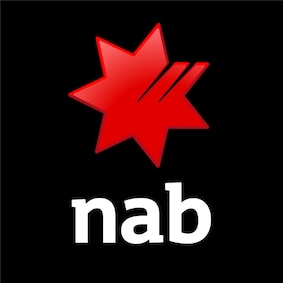Stamp duty
Stamp duty is a tax enforced by state or territory governments based on the purchase price of your property. This means that the amount you will need to pay will vary, depending on where the property is located. Outside the deposit, this could be your biggest upfront cost.
Use our Stamp Duty Calculator to estimate stamp duty in your state or territory.
Depending on your personal circumstances and the type of property you are purchasing, you may be eligible for a stamp duty concession. Check out the website of your state or territory revenue office for further information.
It’s important to note that the various state-based schemes and incentives change quite frequently (almost yearly) so you’ll need to check and double check that you are eligible for any incentives/concessions.
Transfer fee
This is another fee enforced by state governments to cover the cost of transferring the title. Depending on the location of the property, the actual cost to you can vary significantly. You can find more detailed information on title transfer fees on the state or territory revenue office website where the property is located.
Mortgage registration fee
Another fee enforced by state or territory governments. Fortunately, mortgage registration fees are not significant in comparison to the other more substantial fees or costs. Depending on which state or territory the property is located, you can typically expect to pay between $119 to $200.
Legal and conveyance fees
These fees are for a licensed conveyancer or solicitor to complete the following tasks:
- Review your contract.
- Perform checks on the title to ensure that everything is in order with the title.
- Ensure a smooth transfer of the property title from the seller to you.
- Coordinate the payment of stamp duty to the applicable state or territory revenue office.
- Draft settlement documents.
In simple terms, your conveyancer or solicitor will basically do the paperwork. You can typically expect to pay between $700 and $2500, depending on the complexity of the purchase and if the work is performed by a conveyancer or a solicitor. You can learn more by visiting the Australian Institute of Conveyancers’ website.
Mortgage application fees
These are the fees your bank charges to set up your mortgage. Most banks charge additional fees (mortgage registration, loan service fee, etc.) so ask them to itemise everything. Also ask if they offer reduced-fee deals or packages. You can also expect these fees and charges to be noted in your loan contract.
Lenders Mortgage Insurance (LMI)
If you get a 20% deposit together, you usually won’t need Lenders Mortgage Insurance. But homebuyers with a smaller deposit will. This is a one-off fee equivalent to between 1 and 3% of your loan amount. Depending on the scenario, you may be able to capitalise the cost of LMI into your loan. This means that you can include the cost of LMI in the total value of your loan. Speak to your lender to understand what options might be available for you.
Inspection fees
A thorough building inspection is essential. You might be tempted to skip this, but a registered and experienced building inspector can often uncover many hidden issues with the property you’re looking to purchase which could result in you being left out of pocket by thousands of dollars to rectify the issues.
Home, building and contents insurance
If you have a mortgage, building insurance is compulsory. Premiums vary sharply by state or territory, but you should budget at least $1000 a year for building insurance, and around of $500 for home contents insurance.
Moving charges
These can vary massively depending on how much stuff you have, and how far you’re moving. Some estimates could be between $550 and $3500. It's a good idea to shop around and get at least 3 quotes.
Connecting gas, electricity and telecommunications
Try and negotiate with the seller so the electricity and gas stays on and you’re not hit with reconnection fees.
If you need to reconnect, some providers may waive connection or moving fees as an incentive to select them as your provider. Either way, make sure to read the fine print to ensure that you’re not stung by any hidden fees.
How much all up?
Your Mortgage website provides a calculator to estimate your total upfront costs based on a number of various factors. As an example, by purchasing an existing $800,000 property in Victoria to live in you can expect to pay upwards of $50,000 on top of your deposit (where LMI and stamp duty aren’t required).
It can be pretty daunting for first home buyers, but remember the First Home Owner Grant and potential stamp duty concessions may assist with upfront costs.
Depending on your personal circumstances, you might be eligible to purchase your home with the support of the Australian Government 5% Home Deposit Scheme and avoid having to pay Lenders Mortgage Insurance. The scheme supports first home buyers and single parents.
You can also visit the Housing Australia website to learn more about the Australian Government 5% Home Deposit Scheme.
We know that the home loan process can be daunting. You can dip your toes in the water with our ‘choosing the right home loan tool’ – It’s a great way to browse our loans and see what they could cost.
When the time comes, don’t feel like you have to do it on your own. Call us on 13 78 79, visit your local branch, or book an appointment to see your nearest banker.
Home buying costs: Key takeaways
- Stamp duty and transfer fees can add up significantly when buying a property. These costs vary depending on your state or territory, and stamp duty concessions may be available depending on your circumstances.
- Legal and conveyance fees are essential for tasks like contract review and title transfer.
- Mortgage application fees and Lenders Mortgage Insurance (LMI) can increase your initial expenses, particularly if your deposit is under 20%.
- Building inspections are crucial to uncover any hidden issues, and if you have a mortgage, then home, building, and contents insurance are extremely important.
- You need to factor upfront costs such as moving costs, utility connection fees, and other miscellaneous expenses into your budget.
Calculate how much you can borrow
Get an estimate of what you could afford to borrow and compare different home buying scenarios.
Explore other home buying guides
Types of home loans
We explain all of our different loan types and packages.
Home loan pre-approval
The process for getting conditional approval for your mortgage.
How much do you need for a house deposit
Tips to help you save a deposit for a home loan.
Related products and services
Home loans
Home loans for every need with tools, calculators and guides to help you choose.
NAB iSaver
High interest online savings account with no bank fees and bonus interest for the first four months. Check our interest rates and apply online.
Credit cards
Compare between our credit cards to find the right one for you.
Contact us for home loan related queries
This is how you can get in touch.
Start a conversation with a banker
- Log into either NAB Internet Banking or the NAB app.
- Tap on the message icon.
- Type ‘speak to a person’ in the conversation window.
Call us
Speak to a home loan expert about a new or existing home loan.
Monday to Friday, 8:00am to 7:00pm (AEST/AEDT)
Saturday to Sunday, 9:00am to 6:00pm (AEST/AEDT)
Book an appointment
Make an appointment to see us at your nearest branch, ask a mobile banker to come to you or ask us to call you back.
Important information
Apologies but the Important Information section you are trying to view is not displaying properly at the moment. Please refresh the page or try again later.
The information contained in this article is intended to be of a general nature only. It has been prepared without taking into account any person’s objectives, financial situation or needs. Before acting on this information, NAB recommends that you consider whether it is appropriate for your circumstances. NAB recommends that you seek independent legal, financial and taxation advice before acting on any information in this article.
Target Market Determinations for these products are available at nab.com.au/TMD.





